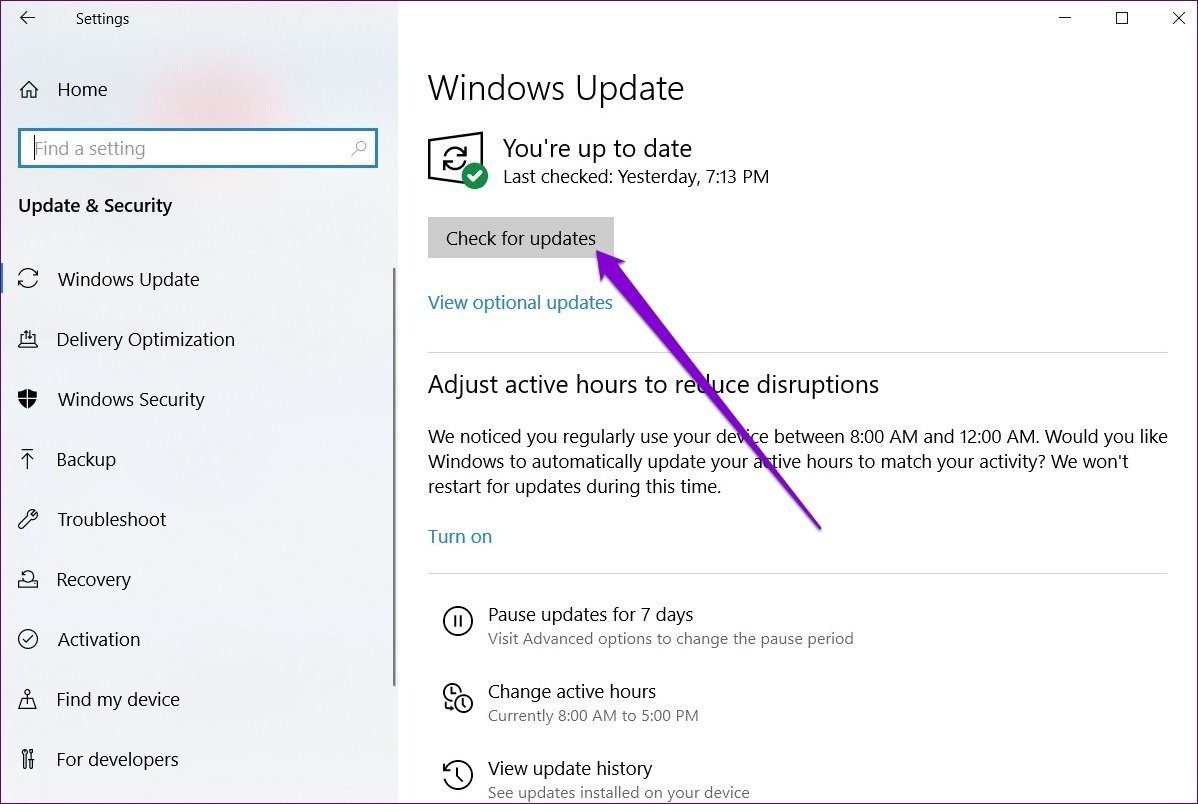7 Ways to Fix Windows 10 Not Updating
Taking advantage of the security updates, new features, and bug fixes that updates bring to your PC, Windows Updates are essential to keep your PC running at its peak.
Meanwhile, many users have reported problems with Windows Update on Windows 10 PCs and laptops, which is frustrating.
This problem comes in different forms depending on what causes it, but all of them cause the Windows 10 PC update to get stuck or end incompletely.
Furthermore, users have been having trouble finding a solution to this problem on their computer, so we have written this article to fully cover the common causes and troubleshooting techniques to fix Windows 10 not updating.
Why is Windows 10 not updated?
The first thing that can cause a Windows 10 upgrade to stop is the result of antivirus, firewall software, and other third-party security programs interfering with the Windows update process.
Also, if your computer has very little storage space to install Windows Update, you may face this problem with Windows 10 Update.
Malware or other factors that cause file corruption may have damaged or affected the Windows Update files on some users’ computers, resulting in Windows Update errors.
Also, since most Windows updates are installed when connected to the Internet, network issues may be why your Windows updates are not installed.
Finally, Windows Update may have been turned off, preventing Windows 10 from updating on your PC or laptop.
Fortunately, based on these reasons and proven techniques that have solved this problem for some users, we have provided the most effective solutions for Windows 10 not updating, and we will discuss them in the next part of this article.
How to install Windows 10 updates on a computer?
Most of the time, your computer will ask you to check for and install Windows 10 updates manually, and you can do this by following these steps:
- Press Windows + I to open Settings on your Windows 10 computer.
- In the Settings window, tap Update & Security and select Windows Update.
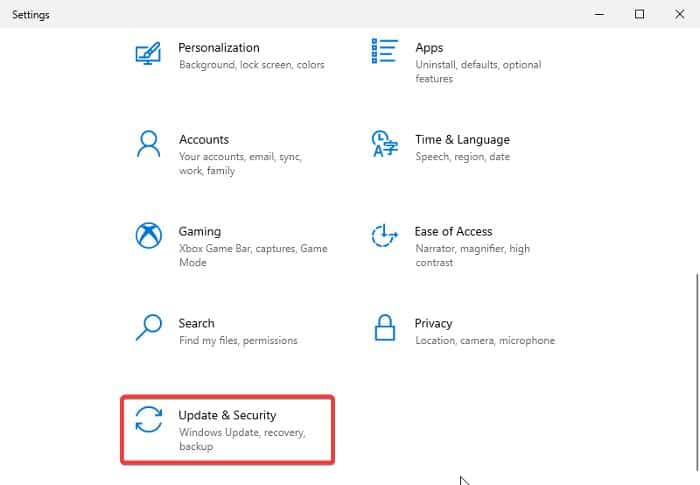
3. Click on Check for Updates, and if an update is available, tap on Download and Install to start the update process.
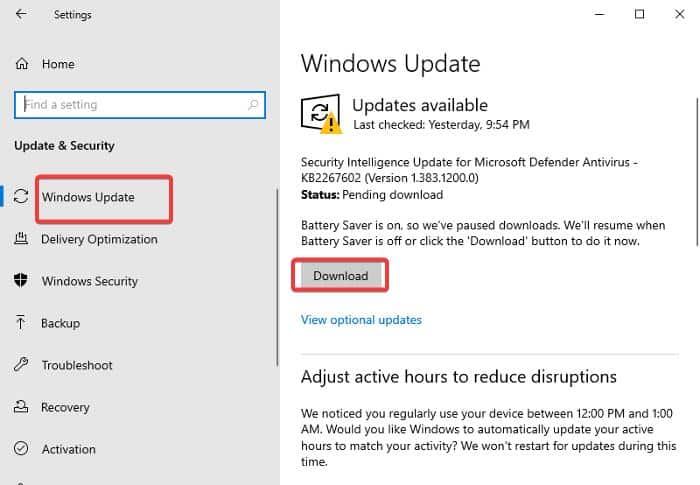
How to fix Windows 10 not updating
Are you looking for how to fix Windows 10 without updating problems on your computer? Here are 8 of the best solutions you should try. Before you look at the keys, if a background process or service prevents your Windows 10 PC from receiving the update, you should restart your PC. If the problem persists even after restarting the computer, try the following solutions:
Method 1. Run the Windows Update Troubleshooter
The first method out of 7 ways to fix Windows 10 not updating is to use Windows Update Troubleshooter.
Windows Update Troubleshooter is a built-in diagnostic tool Microsoft provides to find and fix Windows Update problems. So, this should be your go-to tool when Windows 10 won’t update your computer. Here’s how to run the Windows Update Troubleshooter:
- Press Windows + I to open Settings on your computer
- Tap Update & Security on the left and then select Troubleshoot.
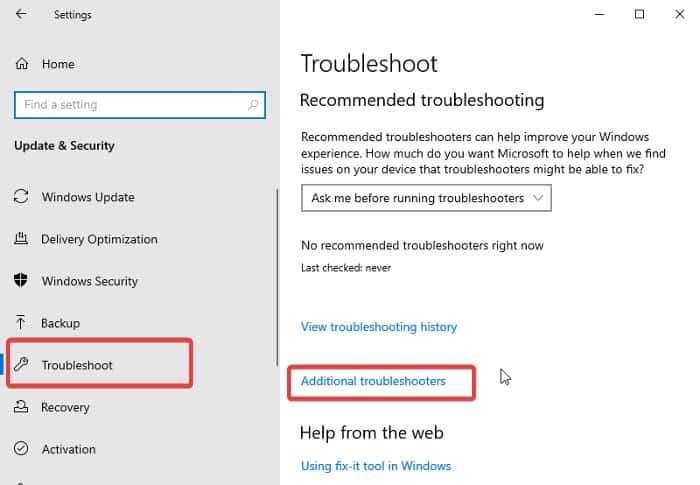
3. Select Additional Troubleshooter, go to Windows Update options, and click on it.
4. Then click Run the Troubleshooter and follow the other on-screen instructions to start the process.
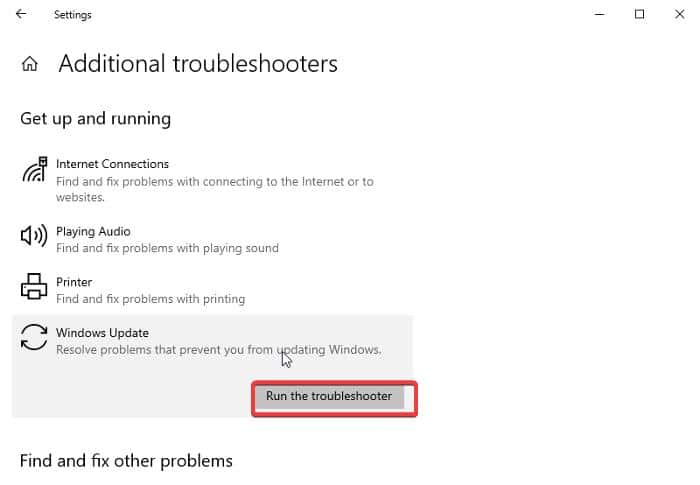
If the troubleshooter finds a problem with Windows Update, it will help you fix it. However, if no problem is found, you should move on to the next solution.
Method 2. Free up storage space on your computer
Windows 10 update has a storage space requirement that must be met to install it on your computer. Otherwise, Windows 10 will not update. Therefore, it is recommended that you put it on your disk to install the update. To get more storage space, you can remove unnecessary programs and files from your computer, back up some of your data to the cloud or an external drive, or even use PC cleanup tools. Use to delete junk files.
Method 3. Install Windows from the Microsoft Update Catalog
Microsoft allows Windows users to install updates from the Microsoft Update Catalog, so if your computer doesn’t establish a particular Windows update, you can go to the Microsoft Update Catalog and install the update directly from there:
- Right-click the Start menu on your computer and select Settings.
- In the Settings window, tap Update & Security and select Windows Update.
- To check for a Windows 10 update that won’t install, click Check for Updates, and then note the KB number of the update found. A code that starts with KB, such as KBXXXXXXXXX, is the KB number, which is part of the details shown about the Windows 10 update.
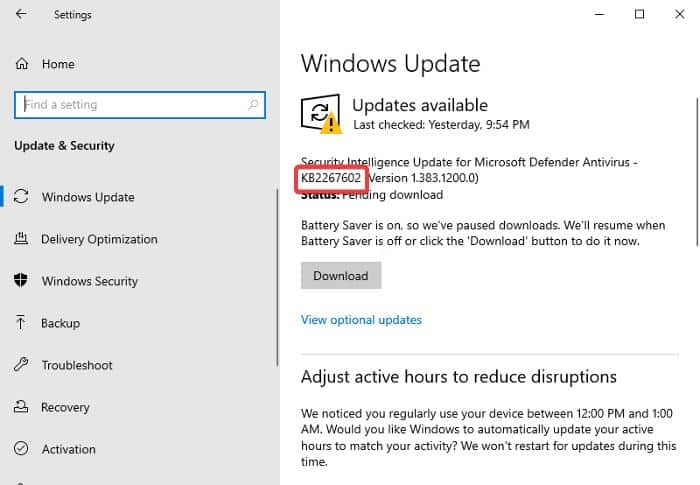
4. Now open a browser on your computer and visit the Microsoft Update Catalog.
5. Click the search menu on the site, type the name of the KB update you mentioned earlier, and press Enter.
6. Select the download button next to the KB update with the specifications that match your computer.
7. After the Download, go to File Explorer and double-click the downloaded file to install it.
8. Then, follow the on-screen instructions to complete the installation process.
Method 4. Remove third-party security software
Third-party security software can sometimes conflict with your Windows 10 update and prevent it from installing on your computer. Therefore, you should turn off or remove third-party security programs, including firewalls and antivirus programs, and see if that fixes the problem. To remove the security software, follow the steps below:
- Press Windows + R to open the Run Command Box.
- Now type the control panel in the run box and press enter.
- This command opens the control panel. In the Control Panel window, click Programs and Features.
- Please navigate to the security program you want to remove, right-click on it, and select Uninstall.
- In the next window, select Yes to confirm the operation.
If the problem persists after removing this software, you can reinstall them and try the next solution.
Method 5. Run SFC and DISM scan
As mentioned earlier, corrupt Windows update files on your computer may lead to Windows 10 not updating problems, so you should run SFC and DISM scan to find the corrupt files. And replace:
Press Windows + S on your computer to open Windows search, type cmd, and select Run as an administrator in the right pane of the search result.
In the Command Prompt window, type the following commands one by one, and after typing each of them, press Enter to run the DISM scan:
DISM /Online /Cleanup-Image /CheckHealth
DISM /Online /Cleanup-Image /ScanHealth
DISM /Online /Cleanup-Image /RestoreHealth
To run an SFC scan, type the following command and hit Enter:
sfc /scannow
After completing these scans, restart your computer and try to run the Windows 10 update.
Method 6. Reset Windows Update components
Another thing you can do to fix this problem is to reset the Windows Update components on your computer. Here’s how to do it:
Press Windows + S to open the Windows search box on your computer, type cmd and select Run as administrator to the right of the search result.
Now type the following commands one by one and press Enter after typing each one.
net stop wuauserv
net stop cryptSvc
net stop bits
net stop msiserver
It would help if you also renamed the “SoftwareDistribution” and “Catroot” folders by typing the following commands one by one and pressing Enter after each one:
-ren C:\Windows\SoftwareDistribution SoftwareDistribution.old
– ren C:\Windows\System32\catroot2 Catroot2.old
Now restart the Windows Update components by typing the following commands one by one and pressing Enter after each one:
net start wuauserv
net start cryptSvc
net start bits
Net start msiserver
After running these commands, you need to close the command prompt, restart your computer and update your Windows 10.
Method 7. Troubleshooting in Clean Boot
The last method out of 7 ways to fix Windows 10 not updating is troubleshooting in Clean Boot.
If you boot your computer in “Clean Boot” mode, which turns off all processes and services, you have a better chance of fixing Windows 10, not updating. Use this solution if you want to identify and remove the offending software that is preventing Windows 10 from receiving updates. Here’s how to boot your device in clean boot mode.
- Press Windows + R to open the Run command.
- Type msconfig in the box and press Enter.
- In System Configuration, go to the Boot option.
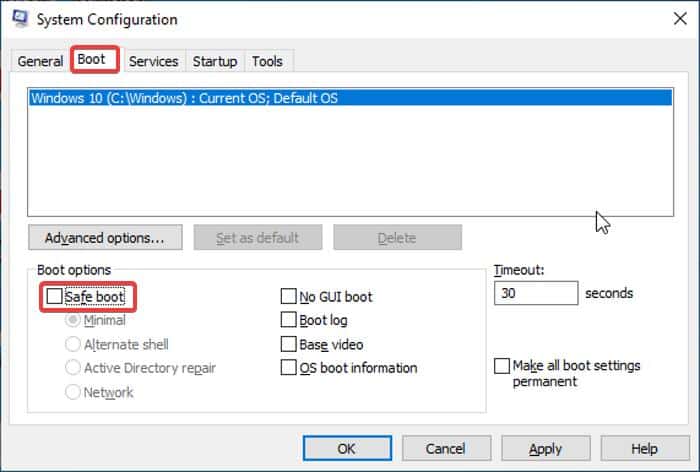
Check the Safe Boot and Network box, then click OK.
Suppose your Windows 10 updates are in Clean Boot mode. In that case, you must enable services and programs on your computer individually to identify the culprit and obliterate it to fix the problem.
Conclusion
Windows Updates are critical to the smooth running of your computer. Still, if they’re not installed on your Windows 10 computer, you’ll need to perform the troubleshooting techniques provided in this section.
You should note that since Windows updates depend on your network speed, they can sometimes take a while to complete. As a result, you should let them run unless you notice an unusually long update period.
Also, as a last resort, you can wipe Windows 10 on your computer to wipe all data and give it a fresh start in the rare case that none of the solutions discussed in this article worked.
